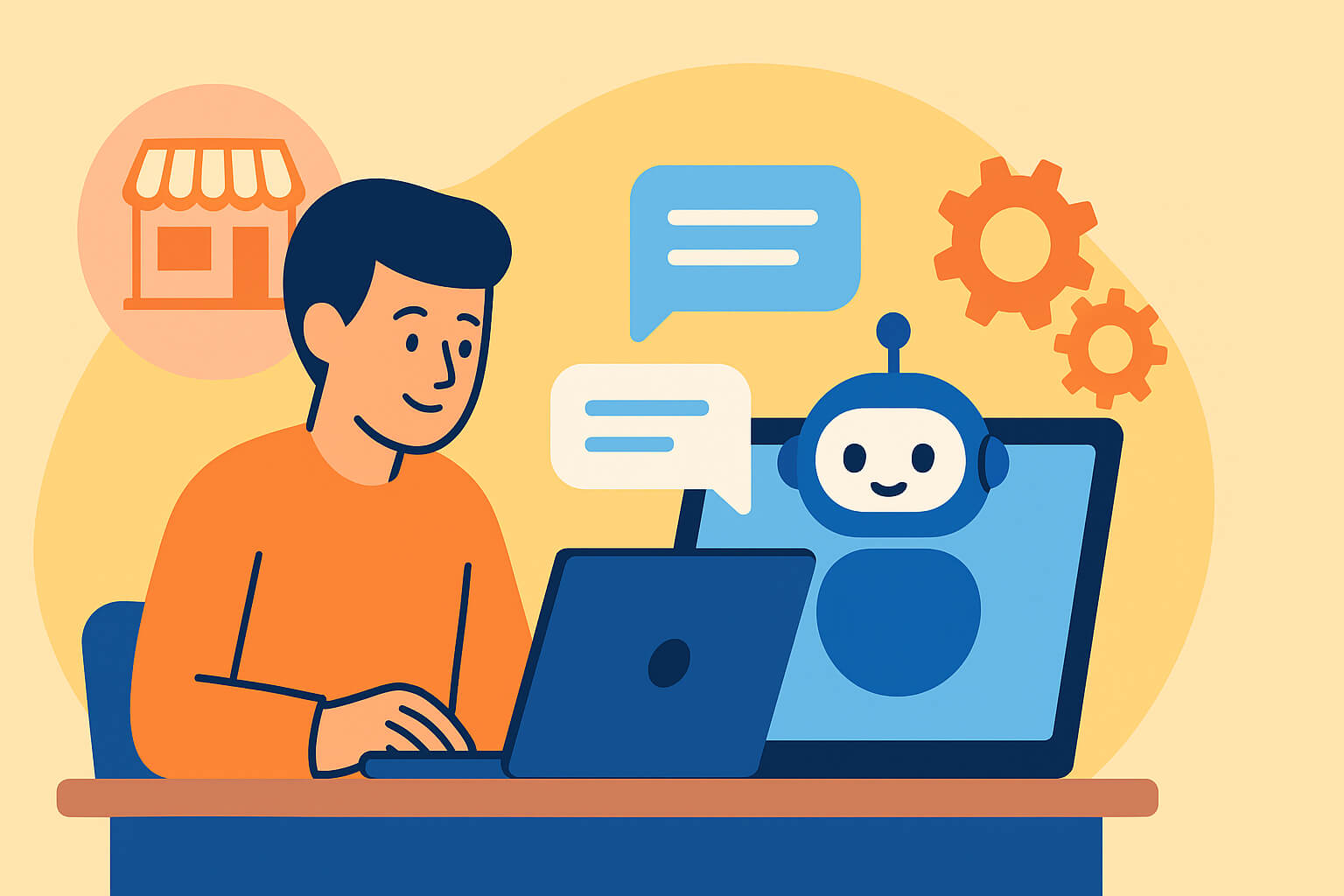Are you wondering “how do I train my own AI chatbot?” You’re not alone. The cool thing is that training your own AI chatbot is simpler than it sounds.
With clear goals, tidy data, and an easy-to-use platform, a small business can teach a bot to answer common questions, book appointments, or even sell products. This step-by-step guide breaks the job into kid-friendly chunks, shows where most owners slip, and gives an action checklist you can finish this week.
Stats prove chatbots cut costs and speed replies, while experts warn that good data and steady testing are the secret sauce for success.
Why Should a Local Business Care?
- Faster help. Chatbots answer three times quicker than humans. (Exploding Topics)
- Big savings. Businesses save about thousands each year on customer support. (Intercom)
When help is quick and free of wait time, shoppers stay happy and come back.
Stat Snapshot
- 37% of companies already use chatbots for support. (Exploding Topics)
- Chatbots boost sales by 67% on average when used for lead capture. (Intercom)
- 75% of service leaders saw more tickets last year, so speed matters. (HubSpot)
- North America owns 30% of the global chatbot market share. (Exploding Topics)
What does “train” mean?
“Train” means feeding the bot examples so it learns how to talk with people. It is like showing flashcards to a child until the child can answer on its own. A well-trained bot knows your business words, your store hours, and your brand voice.
“It’ll be unthinkable not to have intelligence integrated into every product and service.” – Sam Altman
How Do I Train My Own AI Chatbot? (Step-by-Step)
1. Set One Clear Goal
Decide the single job your bot must nail first. Book haircuts, answer menu questions, or collect leads. Narrow focus keeps training small and tidy. (Botpress)
2. Gather and Clean Your Data
Pull chat logs, FAQs, and product sheets. Remove typos, duplicates, and old prices. Clean data beats big data. (Powell)
3. Pick an Easy Platform
Choose a tool that matches your need and budget. Drag-and-drop builders like Botpress or open-source options like Rasa work fine for most shops. (Botpress, Rasa)
4. Feed and Fine-Tune
Upload your text. Many tools let you click “train” and watch progress bars. If you use GPT-style models, fine-tune or add a Retrieval Augmented Generation (RAG) layer so the bot cites your own docs and avoids made-up answers. (WIRED)
5. Test With Real People
Run pretend chats. Note wrong answers. Add those cases back into training. Keep testing until the bot gets at least 90 % correct on common tasks. (Botpress)
6. Deploy on Your Site or Messenger
Most builders give a copy-paste widget or a shareable link. Place it on your homepage and social pages so customers see it.
7. Monitor and Improve
Check logs weekly. Look for “I don’t know” replies. Add missing info to data. Chatbots that get updates keep learning like a good student. (HubSpot)
Pitfalls to avoid
| Pitfall | Quick Fix |
|---|---|
| Too much messy data | Start with 50-100 clean Q&As first. |
| Platform lock-in | Pick tools that export data. |
| Hallucinations | Use RAG or rule triggers for sensitive facts. (WIRED) |
| No human hand-off | Add a “talk to a person” fallback button. |
| Launch and forget | Schedule monthly reviews of chat logs. |
AI Chatbot Training Checklist
- Write one job the bot must do.
- Collect 50 clean question-and-answer pairs from real customers.
- Choose a builder (Botpress, Rasa, or another with a free tier).
- Upload data and run first training cycle.
- Chat with the bot and log errors.
- Add a human hand-off.
- Embed bot on website and Facebook page.
- Review logs every Friday.
Expert Tip: Scale Slowly
IBM research notes that only 11% of companies take AI past pilot stage because they skip data groundwork. (IBM)
Lay the foundation early. Clear data rules, privacy checks, and a content calendar. That way your bot scales with the business, not against it.
Chatbot Services by Diffyweb
For help launching your own small business chatbot, see Diffyweb’s full Chatbot Service Overview and learn how other local shops automate FAQs without code.
Final Thoughts
Chatbots are no longer toys for tech giants. With a clear plan, any small business can train my own AI chatbot and win back hours each week.
Keep the scope tight, feed good data, and tweak often. Your future customers will thank you for the instant help and friendly answers, and your team will have more time for jobs that need a human touch.
